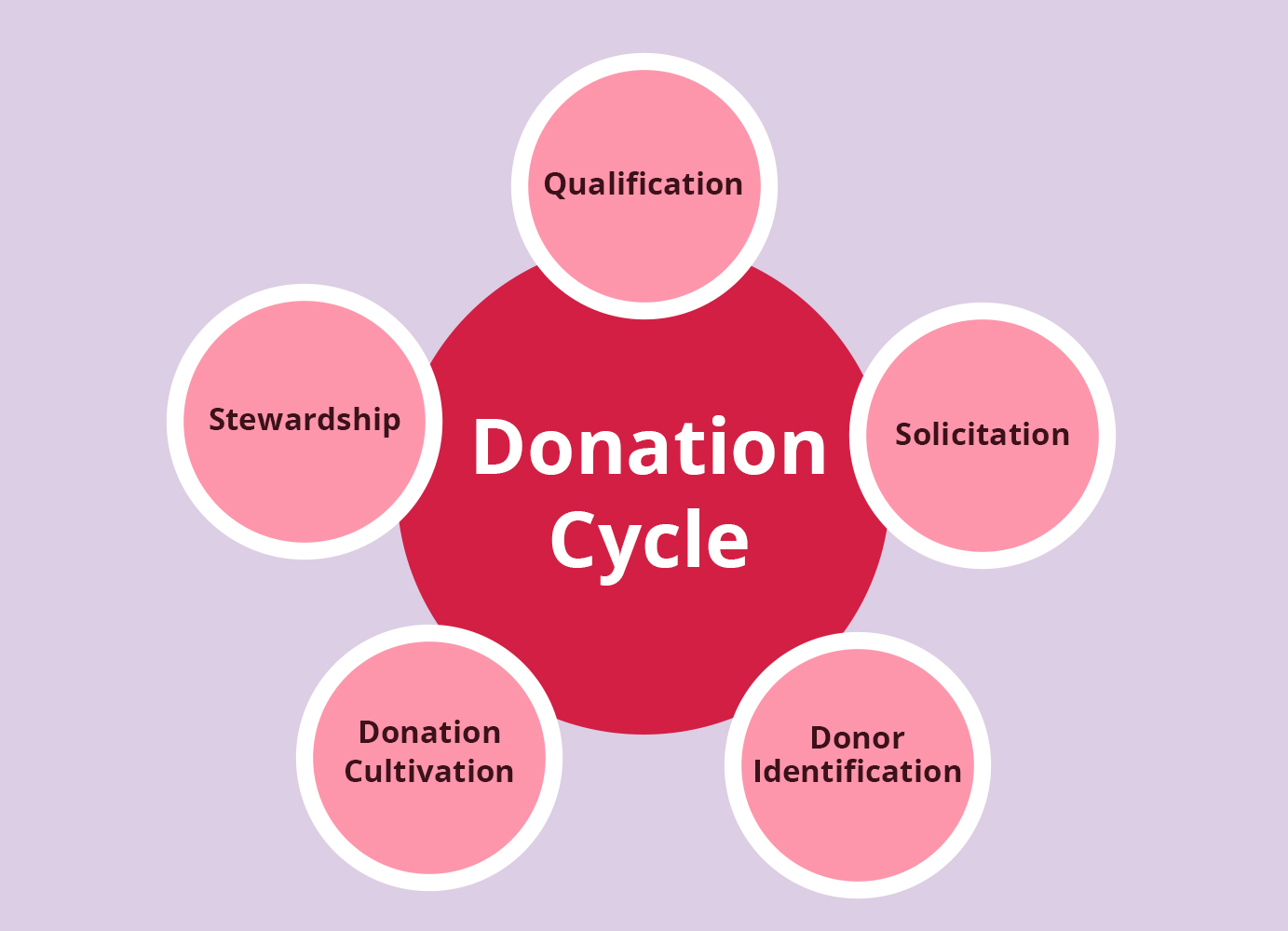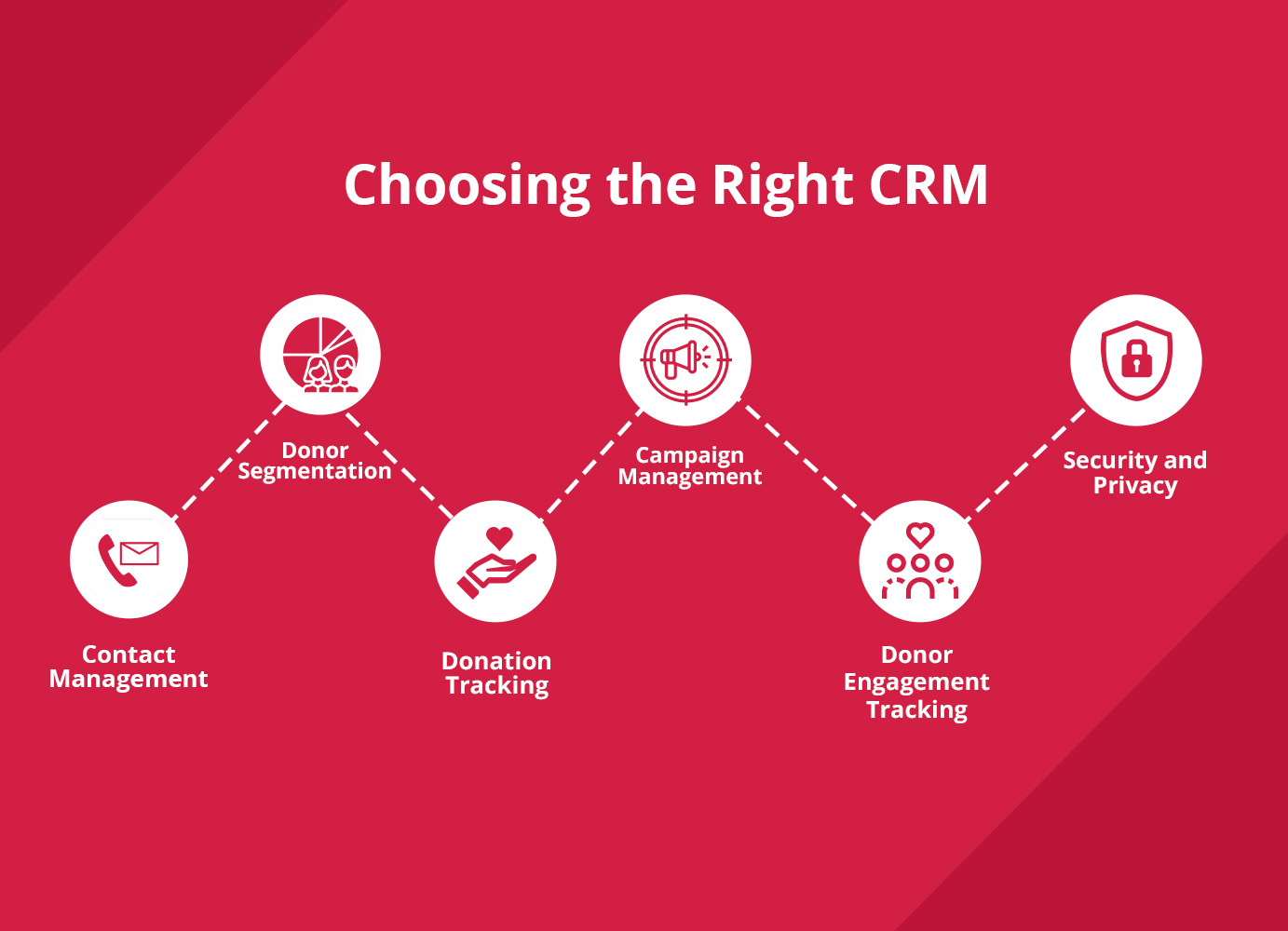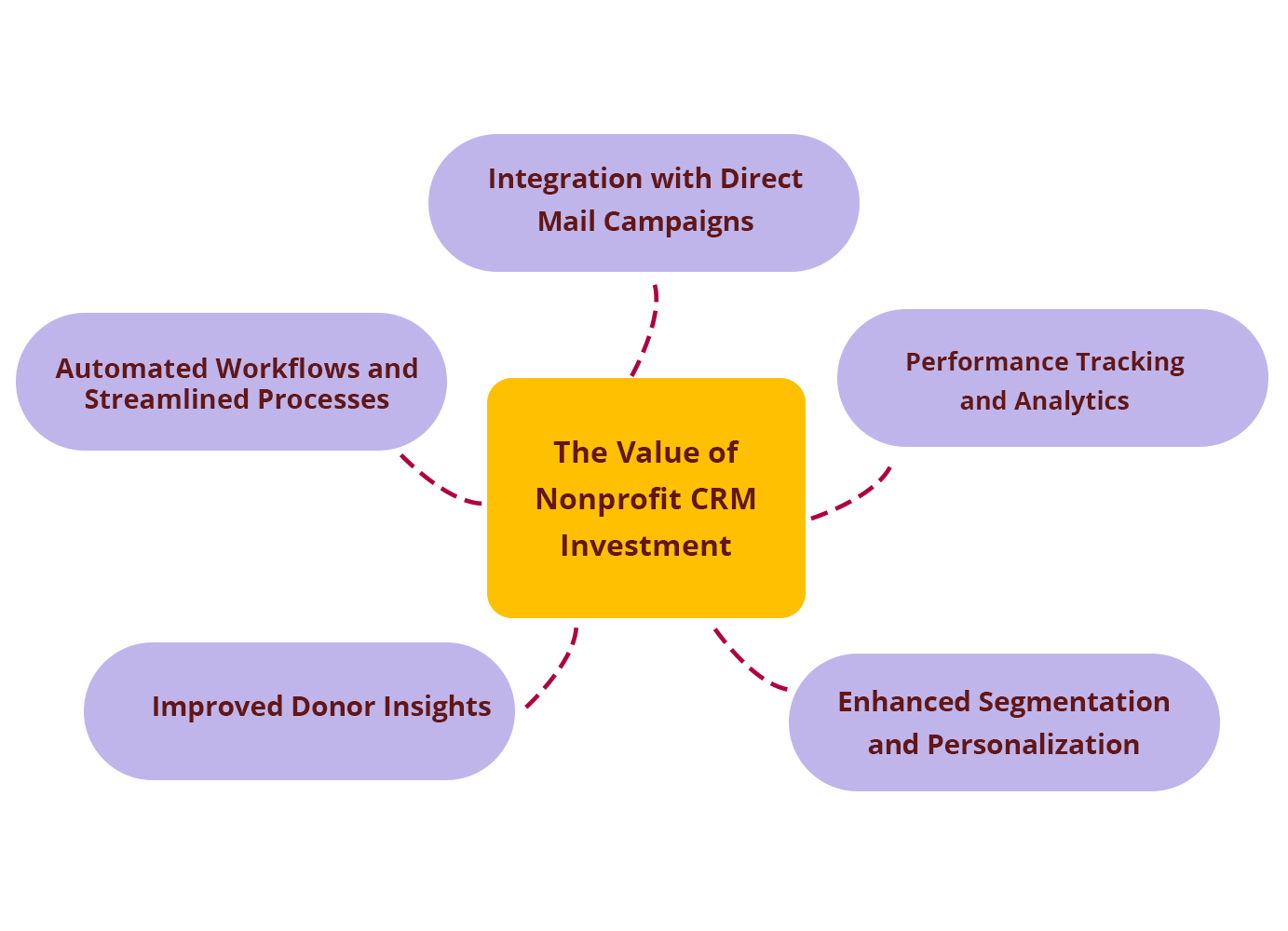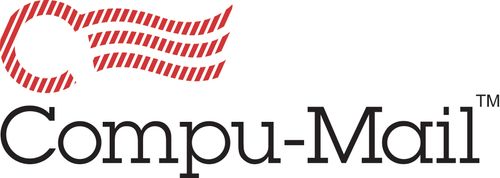Streamlining nonprofit CRM (Customer Relationship Management) selection involves choosing software that efficiently manages donor relationships and fundraising efforts. Start by identifying organizational needs and goals, such as donor retention and communication tracking. Research CRM options tailored to nonprofit requirements, considering factors like user-friendliness, integration capabilities, and affordability. Seek demonstrations or trials to assess usability and compatibility with existing systems. Additionally, solicit feedback from staff members who will utilize the CRM regularly. Ultimately, select a CRM that aligns closely with organizational objectives and workflows, ensuring smooth implementation and long-term success in managing donor relationships and advancing the nonprofit’s mission.
Why Do You Need Nonprofit CRM Software?
Before delving into the process of selecting a CRM solution for your nonprofit, it is crucial to understand why such software is essential. Without a clear understanding of its purpose, you may find yourself overwhelmed by technical jargon and make an ill-informed software choice.
What is a Nonprofit CRM?
Nonprofit CRM software, also known as constituent relationship management software, serves as a comprehensive platform to house and manage crucial information about your nonprofit’s supporters. It acts as a donor database, tracking and organizing every interaction, from conversations to donations and event registrations.
While you may have encountered discussions about CRM software in the context of for-profit organizations, such as Salesforce or Zoho, the fundamental concept remains quite similar for nonprofits. Both types of CRM software are designed to host and organize data to support organizational growth. However, the focus and goal differ. CRM for nonprofits helps develop and nurture relationships that lead to donations.
With a nonprofit CRM, you gain insights into your supporters’ interests, engagement histories, and previous interactions with your organization. Armed with this knowledge, you can engage with your supporters on a more personal level, prioritizing relationship-building. This approach, known as stewardship, fosters donor retention and enables effective cultivation strategies
Donor Retention
A primary objective of your nonprofit CRM software is cultivating relationships with your existing supporters and enhancing your nonprofit’s donor retention rate. Donor retention refers to the percentage of donors who continue to contribute to your organization year after year.
Maintaining strong donor retention is crucial because acquiring new donors is challenging and costly. Studies show that acquiring a new donor can cost 50% to 100% more than the donation amount you receive from them. For instance, if you spend $150 to acquire a $100 donation, your fundraising efforts may result in a net loss. In contrast, focusing on donor retention ensures that your fundraising efforts remain financially sustainable.
Let’s consider a scenario where it costs $20 to retain a $100 donor you initially acquired through a $150 investment. When that donor contributes another $100, you are $30 in the positive instead of $50 in the negative.
Certain nonprofit CRM solutions, like Bloomerang, are designed to help nonprofits improve donor retention rates. These platforms provide access to a dashboard that actively tracks your retention rate, keeping it at the forefront of your team’s attention. Additionally, donor engagement scores and supporter timelines empower your organization to develop deeper relationships and continuously boost this important metric over time.
The capabilities of a nonprofit CRM software solution help organizations effectively nurture existing donor relationships, increase donor retention rates, and ultimately maximize the impact of their fundraising efforts.
Donor Cultivation
Nonprofit CRM software is a valuable tool for cultivating donations and building strong relationships with supporters. Collecting and organizing data enables nonprofits to identify potential mid-tier and major donors and nurture these relationships over time, encouraging increased contributions.
The nonprofit CRM not only aids in prospect identification but also allows for the tracking of interactions and engagement with donors. This information is essential for developing an effective cultivation strategy. With the CRM’s donor database, organizations can monitor progress and ensure alignment with their cultivation activities.
Through the user-friendly interface of the CRM, nonprofits can access a comprehensive view of a donor’s history with the organization, including past contributions and engagement. This valuable insight facilitates personalized and targeted communication, helping to deepen relationships and inspire continued giving.
By leveraging the power of a nonprofit CRM, organizations can effectively cultivate and nurture their donor base, leading to increased support and long-term sustainability for their mission.
Donor Stewardship
A robust stewardship strategy plays a crucial role in retaining donors and fostering stronger relationships with your supporters. Your nonprofit CRM empowers this strategy by providing the necessary tools and data to effectively steward your donors.
Stewardship involves expressing gratitude to your supporters for their contributions to your mission. Your nonprofit CRM enables you to set up immediate and automated appreciation letters, ensuring donors feel recognized and valued.
Moreover, leveraging the data within your CRM allows you to take appreciation to the next level. Personalized phone calls, handwritten letters, and tailored gestures can be implemented based on the insights provided by your CRM. This personalized approach deepens connections, cultivates ongoing support, and completes the donation cycle.
The accompanying chart illustrates the donation cycle and highlights the importance of effective donor stewardship in enhancing your fundraising efforts.

Understanding the purpose of your nonprofit CRM is the first step towards selecting the most suitable solution for your organization. With a clear understanding of your software’s role, you can differentiate between various nonprofit CRM options and choose the one that aligns with your specific needs and goals.
Choosing the Right CRM: Prioritizing Data Applications for Your Nonprofit
The key distinction among CRM solutions lies in how they facilitate and leverage data. Each software solution emphasizes different features to apply donor data across various aspects of your strategy. To make an informed decision, it is crucial to self-evaluate and determine which data applications are most important for your nonprofit.
Further, nonprofit donor CRM software provides tools for managing donor information, interactions, transactions, and campaigns, as well as for creating forms, sending newsletters, running reports, setting up dashboards, and automating sequences.
Start by assessing your organization’s needs and goals that you aim to address through a CRM solution. Create a prioritized list of features that align with these needs. For example, if your focus is on identifying major donors, consider a solution that integrates well with prospect research software. Alternatively, if you seek a scalable solution to manage contact information, prioritize functionality that can accommodate your nonprofit’s growth.
The list below will serve as a guide during your search for nonprofit CRM software, preventing you from being swayed by unnecessary bells and whistles. By prioritizing the features that align with your organization’s requirements, you can make a more informed decision.

- Non profit Contact Management: Efficiently manage your donor and supporter contacts, including their personal information, donation history, communication preferences, and engagement levels.
- Donor Segmentation: Segment your donors based on various criteria such as giving history, demographics, interests, or engagement level. This allows you to personalize communications and target specific donor groups effectively
- Donation Tracking: Track and record donations, pledges, recurring gifts, and matching contributions. Generate reports and analyze giving patterns to understand donor behavior and identify opportunities for growth.
- Campaign Management: Plan, execute, and track fundraising campaigns, events, and appeals. Monitor campaign progress, track responses, and measure the success of your initiatives.
- Communication Tools: Send personalized emails, newsletters, and event invitations to your donors and supporters. Look for CRM solutions that offer email templates, automation, and integration with popular email marketing platforms.
- Reporting and Analytics: Access comprehensive reports and analytics to evaluate fundraising performance, donor retention rates, campaign effectiveness, and other key metrics. Use data-driven insights to make informed decisions and refine your strategies.
- Integration Capabilities: Ensure that the CRM can integrate with other essential tools and platforms such as accounting software, payment gateways, marketing automation tools, and social media platforms. This allows for seamless data flow and enhances overall operational efficiency.
- Mobile Accessibility: Opt for a CRM that offers mobile accessibility, allowing you to access donor information, make updates, and manage tasks on the go. Mobile apps or responsive web interfaces are valuable for remote work and event management.
- Donor Engagement Tracking: Track and measure donor engagement through actions such as event attendance, volunteer participation, or social media interactions. This information helps in identifying highly engaged donors and tailoring stewardship strategies.
- Security and Privacy: Prioritize data security and privacy features to protect sensitive donor information. Look for CRM solutions with data encryption, user access controls, and compliance with industry standards like GDPR or HIPAA.
Remember, the ideal CRM solution may vary based on your nonprofit’s specific requirements. Assess your organization’s needs, set priorities, and choose a CRM that best aligns with your goals, budget, and capacity for implementation and ongoing support.
Factors To Consider While Budgeting for Your Nonprofit CRM
When budgeting for your nonprofit CRM, it’s important to carefully evaluate the costs and benefits of different solutions.
- Determine Your Needs: Start by assessing your organization’s specific CRM requirements. Consider factors such as the number of users, data storage capacity, integration capabilities, and support services. This evaluation will help you determine the features and functionalities that align with your budget and goals.
- Compare Pricing Models: Companies like Boomerang, Salesforce etc. offer flexible pricing options tailored to nonprofits of all sizes. Their pricing may be based on factors such as the number of contacts, user licenses, or additional modules required. Request a quote from them to get a clear understanding of the costs involved and any potential discounts or promotions available.
- Consider Implementation and Training: While evaluating costs, remember to account for implementation and training. The companies provide onboarding assistance and training resources to ensure a smooth transition and effective utilization of the CRM platform. Factor in any associated costs or professional services that may be required during the implementation process.
- Evaluate Return on Investment (ROI): When budgeting for a nonprofit CRM, consider the potential return on investment. Evaluate how the CRM can improve donor engagement, increase fundraising efficiency, and enhance overall organizational effectiveness. Calculate the potential impact on donor retention, acquisition, and revenue generation to assess the long-term value of your investment.
- Seek Grants and Funding Opportunities: Explore potential grants or funding opportunities specifically available for nonprofit CRM solutions. Some foundations and organizations offer financial support for technology initiatives, including CRM implementation. Research and apply for such opportunities to help offset the costs.
- Consider Total Cost of Ownership: In addition to upfront costs, consider the total cost of ownership over the long term. Take into account recurring fees, maintenance costs, and any future upgrades or customizations that may be required. An effective CRM solution offers ongoing support and updates to ensure the system remains optimized and aligned with your evolving needs.
In short, the strategic investment can help streamline operations, improve donor relationships, and drive your organization’s mission forward.
What Type of Buyer Are You?
For Small Nonprofits: Operating within constrained budgets and limited reach, small nonprofit organizations benefit from CRM solutions tailored to their scale. Providers like NonProfitEasy and Batchbook offer budget-friendly options, starting from $20 per month, with some even providing free editions supporting full features for a restricted user base.
For Mid Sized Nonprofits: With more financial flexibility, mid sized nonprofits can explore CRM solutions offering advanced functionalities in donor management, nonprofit CRM bulk mail, event coordination, and database administration.
For Large Nonprofits: Catering to expansive operations and substantial donor databases, CRM platforms like Salesforce and Trail Blazer excel in managing large volumes of data. They offer robust features for tracking donations, volunteer recruitment, multi-location support, and access to integrated applications for event planning, fundraising, and volunteer engagement.
The Value of Nonprofit CRM Investment: Enhancing Direct Mail with Compu-Mail

Investing in a nonprofit CRM (constituent relationship management) software offers significant value and benefits for your organization. With an effective CRM solution you can elevate your direct mail campaigns and achieve better results.
- Improved Donor Insights: A nonprofit CRM allows you to gather and analyze donor data, providing valuable insights into their preferences, giving history, and engagement levels. This information helps you tailor your direct mail campaigns to be more targeted and personalized, increasing the likelihood of donor response and engagement.
- Enhanced Segmentation and Personalization: You can segment your donor database CRM based on various criteria such as donation history, demographics, or interests. This segmentation enables you to create customized direct mail campaigns that resonate with specific donor segments, leading to higher response rates and stronger connections with your supporters.
- Automated Workflows and Streamlined Processes: Nonprofit CRM offers automation capabilities, allowing you to streamline your direct mail processes. You can set up automated workflows for tasks such as donor communications, acknowledgment letters, and campaign tracking. This saves time and resources while ensuring timely and consistent donor interactions.
- Integration with Direct Mail Campaigns: Compu-Mail offers integrated direct mail services, enabling you to leverage the power of physical mail alongside your digital strategies. By combining the personal touch of direct mail with the data-driven insights from your CRM, you can create impactful, omnichannel campaigns that drive donor engagement and support.
- Performance Tracking and Analytics: Compu-Mail also provides robust reporting and analytics features, allowing you to measure the effectiveness of your direct mail campaigns. You can track response rates, conversions, and campaign ROI, enabling data-driven decision-making for future initiatives and continuous improvement.
Additionally, partnering with a direct mail service like Compu-Mail can further enhance the capabilities of your nonprofit CRM. Compu-Mail specializes in direct mail marketing and can work hand-in-hand with your CRM to boost your fundraising and donor engagement efforts. By integrating our services, you can seamlessly merge digital and physical channels, reaching donors through personalized direct mail campaigns that are tailored to their interests and preferences.
We also hold expertise in data management, variable printing, and mailing logistics, and can maximize the impact of your fundraising appeals, event invitations, and donor communications.
This collaboration between your nonprofit CRM and Compu-Mail can provide a comprehensive solution for effectively reaching and connecting with your supporters, ultimately helping you achieve your fundraising goals and advance your organization’s mission.
The Bottom Line
Selecting the right CRM for your nonprofit organization is a crucial step in streamlining your operations and optimizing donor relationships. By following a step-by-step guide, you can navigate through the process with confidence. Assessing your organization’s needs, researching available options, and considering key factors such as functionality, ease of use, integration capabilities, and cost will lead you to make an informed decision. A well-chosen nonprofit CRM can empower your organization to effectively manage donor data, streamline fundraising efforts, enhance volunteer management, and demonstrate impact. With the right CRM and in place, your nonprofit can efficiently fulfill its mission, strengthen stakeholder engagement, and pave the way for long-term success.
FAQs
Q: What is the best CRM for nonprofit?
A: The best CRM software for nonprofits depends on the specific needs and goals of the organization. Some popular CRM options for nonprofits include Salesforce Nonprofit Cloud, Bloomerang, NeonCRM, Blackbaud CRM, and HubSpot CRM. Each CRM has its own strengths and features, so it’s important to evaluate them based on your organization’s requirements.
Q: Why does a nonprofit need a CRM?
A: A nonprofit can benefit from a CRM (Customer Relationship Management) system in several ways. A CRM helps manage and organize donor information, track interactions and donations, streamline fundraising efforts, improve donor relationships, and enhance overall operational efficiency. It enables nonprofits to effectively communicate with supporters, personalize engagement, track outcomes, and make data-driven decisions.
Q: How many nonprofits use CRM?
A: While there is no exact figure on how many nonprofits use CRM, it is increasingly common for nonprofits to adopt CRM systems to manage their relationships with donors, volunteers, and other stakeholders. Many nonprofits of all sizes and types recognize the value of a CRM in enhancing their operations and achieving their mission.
Q: How to use CRM solutions for nonprofits?
A: To use a CRM for nonprofits effectively, start by identifying your organization’s goals and requirements. Implement the CRM by migrating and organizing existing data, and training staff on its use. Utilize the CRM to track and manage donor interactions, donations, volunteer activities, and program outcomes. Leverage its features for donor segmentation, personalized communication, fundraising campaigns, event management, and reporting. Regularly update and maintain the CRM to ensure data accuracy and maximize its benefits.





